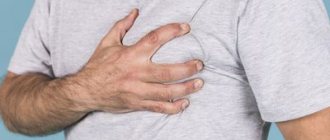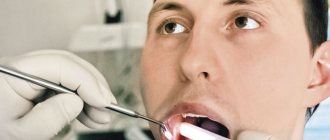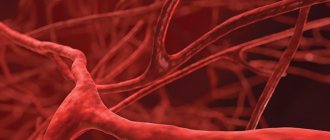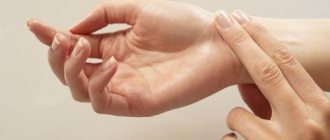Epilepsy (falling disease) is a fairly common pathology of the nervous system, the main manifestation of which is an epileptic seizure. An epileptic attack can be quite frightening and is characterized by loss of consciousness, the onset of seizures and, in some isolated cases, foam at the mouth. Sometimes it may take on a reddish tint.
To provide first aid, you do not need to have specific medical knowledge or skills. In most cases, the seizure goes away on its own; it is not necessary to call an ambulance. As a rule, a person who knows about his problems carries a note with the numbers of his relatives, friends, and information about himself, which may be useful to those who happen to be close to him.
However, people who want to help the victim should carefully perform first aid procedures, since the wrong procedure can cause serious harm to the patient.
People suffering from epilepsy should be regularly examined by a doctor, as the correct prescription of medications and constant monitoring of the disease reduce the risk of epileptic seizures. The Yusupov Hospital provides medical services from the best neurologists and epileptologists in the capital, who will select individual treatment for each patient.
Epilepsy and epileptic seizures are of completely different types and can manifest themselves in different ways. However, despite the variety, the attack always occurs suddenly. There are some signs by which you can determine an impending seizure, but this is not always possible. It is important for the person providing assistance to maintain inner calm and confidently carry out all necessary actions, since a person’s life is at stake.
Signs of an epileptic seizure
The mechanics of the occurrence of epilepsy has not been precisely clarified at the moment, but it is known that seizures begin against the background of intense stimulation of areas of the cerebral cortex due to increased electrical activity of nerve endings.
Signs of an attack, as a rule, vary from person to person, but there is a certain set of symptoms that helps determine the stage of the attack and immediately proceed to first aid procedures. Such crises cause great pain and stress to the patient, so after the seizure the victim must be handled very carefully.
Signs of an epileptic seizure include:
- sudden loss of balance, falling to the ground;
- loss of consciousness;
- nausea, vomiting;
- heavy breathing;
- muscle hypertonicity;
- inseparable loud shouting;
- a sharp increase in blood pressure;
- blood from the nose;
- involuntary throwing of the head back;
- “glass eyes”;
- increased salivation, sometimes with foam;
- loss of sense of reality of the surrounding world;
- disruption of the thinking process, misunderstanding of words or shouts of strangers;
- involuntary bowel movements or urination;
- local convulsions or convulsions of the whole body;
- numbness of the limbs;
- pupils stop responding to light;
- bluishness or redness of the face and other skin;
- very rapid pulse or its strong decrease;
- convulsions.
It is quite difficult to prevent an attack, but by certain indicators you can understand its approach and take the patient to a safe place.
Expert opinion
Author: Olga Vladimirovna Boyko Neurologist, Doctor of Medical Sciences
Doctors consider epilepsy one of the most dangerous neurological pathologies. This is because a seizure can occur at any time. This increases the risk of injury. Therefore, epilepsy requires timely diagnosis and treatment. The disease occupies a leading place in the structure of disability. According to statistics, 30% of patients are disabled people of group 1 or 2. In order to reduce the risk of injury during an epileptic attack, doctors have developed special first aid recommendations. Anyone can familiarize themselves with them.Doctors at the Yusupov Hospital diagnose and treat various forms of epilepsy. Modern European CT, MRI and EEG equipment are used for examination. This medical equipment allows you to quickly determine the localization of the pathological focus. The quality of treatment depends on the accuracy of the research. An individual therapeutic plan is drawn up by experienced neurologists and epileptologists. If you follow medical recommendations for the treatment and prevention of epileptic seizures, 60-70% of patients at the Yusupov Hospital achieve long-term remission.
There are more epileptics than you think
Few people think about how many people actually suffer from epilepsy until a person with this disease appears in his environment. Meanwhile, every tenth person has experienced convulsive seizures at least once in their life; you don’t have to be an epileptic for this. In our country, the number of epileptic patients fluctuates around a million people, and not all of them are aware of the danger of epileptic seizures and know the safety rules. 2,000 people become victims of epilepsy in Russia every year
.
Causes of occurrence and development
There are no immediate causes that can cause an epileptic seizure, but there are a number of risk factors that, under certain circumstances, can trigger an epileptic seizure. Risk factors can be either congenital or acquired.
Hereditary predisposition involves the special functioning of neurons and their tendency to spontaneous excitation. This feature can be passed on from generation to generation, but does not always manifest itself. Epilepsy with a hereditary predisposition can develop in the case of acquired provoking factors, namely:
- with cerebral hemorrhage or other cerebrovascular accidents;
- after traumatic brain injury;
- as a result of prolonged alcoholism, use of narcotic and psychotropic drugs, severe stress;
- with meningitis, encephalitis;
- for birth injuries;
- with a brain abscess or stroke;
- in the presence of aneurysms, cysts or adhesions in the brain.
Factors influencing the occurrence of an epileptic seizure are:
- poor sleep patterns;
- drinking alcohol, caffeine, taking any amount of drugs, antidepressants not prescribed by a doctor;
- refusal to take medications or undergo therapy;
- smoking;
- stress;
- changes in hormonal levels due to certain diseases;
- menstruation in women.
It is very important to understand: if an attack has begun, in no case should you give the patient any medications, especially those that are not prescribed by the attending physician. In such a situation, the process has already started, and any pills can only do harm. An attack, if it lasts no more than three minutes, should simply be controlled and not try to bring the person to his senses. However, if the attack lasts longer, it is important to call a medical team.
Doctors at the Yusupov Hospital work around the clock, so in case of complications after epileptic syndrome, you should immediately consult a doctor to avoid disastrous consequences. We will help our patients get out of any difficult situation.
Reasons for the formation of an attack
Pathological activity of the brain of a patient with epilepsy is a process that can “start” for a variety of reasons.
The most common factors in the development of an epileptic attack:
- photostimulation (exposure to sharply flickering light);
- stress;
- lack of sleep;
- taking certain types of medications;
- deep intense emotions: sharp fear, fear, anger, and others;
- alcohol consumption;
- frequent and deep breathing (hyperventilation);
- electrical influence, for example, electrophoresis;
- acupuncture and massage;
- use of psychostimulants.
Provoking factors
Often, epileptic seizures occur from various “triggers” - situations that provoke an attack. This could be a bright flashing picture, a sequence of sharp sounds. There are cases where overly bright cartoon screensavers caused a negative reaction in children. The danger comes from flashing, rapidly changing images that overload sensitive systems.
If the attack is caused by just such a factor, then it is better to get rid of it at the first opportunity: turn off the TV, turn down the volume. After the attack ends, ensure that you stay in a quiet room with dim lighting. If you do not get rid of the triggers, they can provoke a series of repeated attacks, which will not be easy for the body to survive.
Memo for the patient
Attack with convulsions
- Protect my head.
- Do not restrain my movements unless I am in danger.
- Don't put anything in my mouth, especially your fingers.
- When the attack is over, talk to me, put me on my side so that I can breathe easier.
- Make sure that I can completely rest and calm down after the attack ends.
- Please note there is usually no need to call the medical staff unless the attack lasts longer than usual for me, or if the seizures occur one after another.
If you have an attack without convulsions
- Do not restrain my movements unless I am in danger.
- Reassure me and stay with me during the state of confusion that may follow an attack.
- Stay with me until I fully regain consciousness and am able to talk to you.
How to spot an impending seizure
It is impossible to prevent an epileptic seizure, but you can warn others about it in advance or ask for help if you suffer from epilepsy and feel an attack coming.
First comes the tonic phase, its manifestations are convulsions, loss of control over the situation, increased salivation, etc. As a rule, due to hypertonicity of the muscles, the legs remain straight, and the arms involuntarily bend at the elbows. Breathing becomes difficult and may stop for several seconds at regular intervals. Asphyxia causes the skin to turn blue, especially the lips.
The tonic phase lasts about 30-45 seconds, after which the clonic phase begins. The clonic period is characterized by alternating muscle tension and relaxation - convulsions and convulsive states. During this period, the person twitches randomly, bends in unnatural positions, but does not come to his senses. The patient may spontaneously bite his lips or tongue, which causes blood to appear in the saliva. During the period of complete muscle relaxation, the internal sphincters also weaken, which can cause bowel or bladder emptying.
A few minutes before the onset of epileptic syndrome, the patient may suffer from restlessness, increased anxiety, and may experience hallucinations of various types. There are several types of pre-epileptic conditions, so-called auras:
- speech aura – disturbance of sensory or motor functions;
- mental aura - a sudden, unconditional feeling of sadness, melancholy, increased anxiety, panic attacks, or vice versa, a sharp surge of energy and joy;
- vegetative aura – dysfunction of the executive organs: blood vessels, secretion glands and muscles;
- sensitive aura - distortions in the sensations of external stimuli, a feeling of extreme cold or heat, a disturbance in the sensation of one’s body;
- sensory aura - changes in auditory, olfactory and visual sensations.
It is important not to panic if you notice similar symptoms in yourself or someone nearby. You should calmly warn others about this and secure your location by removing all dangerous piercing or cutting objects, and also move to a safe place where you can lie down.
The round-the-clock reception of doctors at the Yusupov Hospital will protect patients in the clinic from complications after an epileptic seizure. We pay close attention to each of our visitors, guaranteeing high-quality treatment results.
Make an appointment
Symptoms of the disease: Jacksonian attacks
Taking into account the peculiarities of the formation of epilepsy, the variety of causes that cause it, as well as the individuality of the reactions of each specific organism to certain stimuli, the signs and manifestations of the disease are very specific and individual in nature for each patient.
Depending on which part of the brain is damaged, a person may experience:
- movement disorders;
- increased or decreased muscle tone;
- impaired speech abilities;
- disorders of mental processes and reactions.
In patients with Jacksonian attacks, increasing impulsive irritation covers one specific area of the brain, without spreading to neighboring ones. The reaction, accordingly, extends to a specific muscle group.
The attack is characterized by short-term psychomotor disorders, the person remains conscious, but it is confused, he loses contact with the outside world and people. At the same time, the patient is not aware of the appearance of his disorder and rejects attempts to help. After a couple of minutes, the attack ends and the condition returns to normal.
Muscle activity is characterized by convulsive twitching or numbness of the hand, leg or foot. Further, the spasm can turn into a general seizure - a large generalized seizure.
A grand mal seizure is a sequential change of several phases:
- warning signs of a seizure;
- tonic seizures;
- clonic seizures;
- stupor;
- sleep.
Precursors of an attack appear as an anxious state that grips the patient. The focus of pathological activity gradually grows.
Tonic convulsions are a condition when all the muscles tense sharply, the head involuntarily throws back, the patient cannot stand on his feet and falls to the floor. His body arches. There may be cessation of breathing and a bluish face. This phase lasts up to 30 seconds.
During clonic convulsions, the muscles of the body begin to contract with a certain rhythm. The patient's salivation increases in the form of foam coming from the mouth. The stage lasts about 5 minutes. Then breathing is gradually restored.
During stupor, the focus of pathological activity is subjected to sharp inhibition. The muscles relax, and the person may involuntarily pass feces and urine. In this state, the patient loses consciousness and loss of reflexes occurs. After about half an hour the stage ends. The epileptic goes into a state of sleep.
First aid algorithm
First aid for an epileptic seizure is extremely important, since incorrect actions can not only not help the victim, but also worsen the situation. If someone nearby begins to show symptoms of an impending seizure, you should prepare:
- find out whether the person has had epileptic seizures before;
- If a person has epilepsy, he must immediately take the pills prescribed by the doctor to block the seizure. At the same time, people nearby should not give the patient tablets of unknown origin;
- secure your location, move to a safe, uninhabited place;
- if the situation occurs indoors, it is necessary to open windows or doors to ensure the flow of fresh air;
- the patient's head should be placed on one side to avoid choking on saliva or vomit;
- provide the patient with a fall on a soft surface, place an additional soft object under the head so that the head is higher than the body;
- remove all potentially traumatic objects;
- remove belts, necklaces, hats and all things that can squeeze, cause discomfort and make breathing difficult.
Minor seizures of epilepsy: how they occur
This type of seizure is less severe. The facial muscles may twitch, muscle tone decreases, or, conversely, increases sharply. The person may fall to the floor or freeze in one position. Consciousness is preserved. The patient experiences a state of temporary “absence,” when he freezes and does not respond to external stimuli.
If the patient is plagued by a series of seizures, one after another, this condition is called status epilepticus. Between seizures, the patient is unconscious, has no reflexes and decreased muscle tone. The pulse is disrupted, and cerebral hypoxia increases. If status epilepticus develops, a person definitely needs medical assistance.
The beginning and end of epileptic seizures are usually spontaneous.
What to do if an epileptic seizure has already begun?
To begin with, it is worth remembering that panic and loss of self-control are factors due to which help during an epileptic seizure may be incorrect. You need to calm down, take a breath and begin to perform the following algorithm of actions:
- record the time of onset of the attack;
- if possible, place the patient with a rolled up soft cloth or any non-hard object between the jaws to avoid biting the lips or tongue;
- record the time of the end of the attack, this will help in the future when making a diagnosis.
It is important to stay close by until the symptoms go away completely. If there is no direct threat to life and health, then it is better not to actively interfere with the course of events. Excessive activity from those who want to help can often harm further well-being.
There are a number of erroneous actions that can cause significant harm to the victim.
What not to do
Doctors talk about several actions that should never be taken if you want to help.
Firstly, under no circumstances should you leave a person alone. During the tonic phase of seizures, the patient may stop breathing due to spasm of the airways. During the clonic phase, hitting your head on something.
Secondly, it is strictly contraindicated to try to restrain a person who is convulsing. The muscles are overstrained due to contractions, and excessive pressure on the limbs or spine will not lead to anything good, but will only increase the risk of damage to the muscle fibers or joints when it comes to the limbs.
Thirdly, there is a well-established stereotype that an epileptic needs to insert something between his teeth. Usually a spoon or keys are mentioned as a suitable item. But the facial muscles are no less tense than others, so an attempt to unclench the jaws can damage the teeth and result in a fracture of the lower jaw. This measure is also fraught with injury for those who want to provide first aid: the jaws are clenched with such force that the epileptic can bite off the finger with which they want to open his mouth.
The risk that an epileptic will bite off his own tongue is a harmful lie. This is a muscle like all the others. When she is in a state of hypertonicity, the likelihood of biting or sticking her tongue tends to zero.
Fourthly, it is very important not to give any medications to an epileptic, even if some medications are found in the patient’s pockets or bag. When under stress, it is easy to miscalculate the dosage, including that of a specially prescribed drug. You can also allow a situation in which the pill ends up in the wrong throat. If the medicine does harm, the person who wants to help will face criminal liability, even if he acted with the best intentions.
At the end of the attack, especially if none have been observed before, the patient should be taken to the clinic for further examination. Qualified doctors at the Yusupov Hospital are ready to provide assistance at any time of the day. Our doctors treat each patient responsibly and attentively, carry out all manipulations and examinations based on individual indicators.
Make an appointment
Relief of status epilepticus. Drugs
We usually relieve status epilepticus using a number of measures. At the very first stage, we provide the patient with the opportunity to breathe freely. This is followed by oxygen treatment - oxygen therapy.
We administer Diazepam intravenously, not exceeding the daily dose, which is 40 mg. A serious side effect of this medication is insufficient pulmonary ventilation.
Our doctors carry out further treatment of status epilepticus using Depakine, Diazepam, Feniton and other drugs, the choice of which depends on the stage of SE. Like all medications, medications administered to a patient for ES have side effects.
The most common of which are:
- A sharp decrease in potassium in the body;
- Sclerosis of veins;
- Acute toxic hepatitis;
- A sharp decrease in blood pressure, accompanied by dizziness, drowsiness, and often visual disturbances.
If the stage is advanced, then we treat ES using the drugs Phenobarbital, Lorazepam and others.
The measures carried out by our doctors during the refractory stage of epistatus boil down to intubation, artificial ventilation of the lungs, and correction of the water-salt balance of the body.
In case of critical condition of the patient, we provide barbiturate anesthesia. Over 20 seconds, the doctor administers 100 to 250 mg of sodium thiopental as an intravenous injection. The duration of anesthesia can range from 12 hours to a whole day.
We administer Dexamethasone and Mannitol by injection to prevent brain swelling. Our doctors use drugs such as Magnesia and others with similar effects to restore metabolism and proper circulation of cerebrospinal fluid.
What to do after an attack
After an epileptic seizure, the patient needs peace and rest, since during an attack the body depletes resources and needs to be replenished. Before the ambulance arrives, provide the victim with complete comfort and psychological support. Try to rid him of all irritants and remain calm.
An ambulance should be called only if the seizure lasts more than 3 minutes, or if it recurs. Professional help is also necessary if during an attack the patient injures himself, is injured or suffocates. After an epileptic attack, the following steps should be taken:
- put the patient on his side and let him rest for a few minutes;
- if the attack happened in a crowded place, ask everyone to move away to ensure psychological comfort for the victim;
- if a person involuntarily empties his bowels or bladder, try to clean the area and remove dirty clothes;
- notify the patient’s relatives or loved ones about what happened, especially if he is a minor or an elderly person;
- do not leave the patient for at least another 15-20 minutes, since normalization of the condition does not occur immediately. Transport the victim home if he wishes.
It is important to understand that even the correct implementation of first aid cannot guarantee the absence of the risk of developing side complications. Immediately after an epileptic seizure, the patient should be admitted to the neurology clinic of the Yusupov Hospital, where the best neurologists in the capital will determine the diagnosis and prescribe concomitant treatment. Examinations in the hospital are carried out using modern European equipment, which allows you to obtain the most accurate results. Our medical staff is ready to provide first aid in emergency situations throughout the day.
How can you help a patient with epilepsy?
Strictly monitor the correct intake of medications, even if this requires resorting to pedagogical pressure. Sometimes a special box with medications for the day or week helps.
The condition must be carefully recorded, i.e. keep a diary recording attacks, in which they note the time and duration of attacks, their nature, the situation with which they may be associated (high body temperature, insufficient sleep), side effects of medications.
Regularly visit the doctor and follow all his prescriptions.
Maintain a proper sleep schedule.
When to call an ambulance
To provide first aid for epilepsy, it is not always necessary to involve doctors. As a rule, attacks are fleeting. There are cases when compassionate citizens called the ambulance crew, but by the time they arrived they had already left the scene on their own.
In addition, for some, such situations happen several times a day. With such options, it is enough to know the basic principles of providing assistance, and if everything proceeds without complications, you can cope on your own.
In some situations, the help of medical specialists is vital for a patient with epilepsy.
The attack happened for the first time in my life
You cannot be sure how the body will react if it has not experienced such overexertion before. It is quite possible that epilepsy is manifesting itself right now (this can happen at any age). However, there is a danger that a seizure is a sign of some disease, the exacerbation of which requires the intervention of appropriately qualified specialists.
The victim is a child or elderly
The bodies of children and the elderly are most vulnerable to critical changes in health. Even if everything goes as normal, only doctors will be able to give an accurate conclusion regarding the condition of the body and further health risks.
Cramps in a pregnant woman
A neurological disease can be fatal to a child in the womb. If a woman is late in pregnancy, there is a risk of premature onset of labor.
There is a possibility of injury
During seizures, the patient may hit his head on a sharp corner or be injured during a fall. Even if it just seems to you that there is a risk of traumatic brain injury or any other injury, it is better to call specialists and keep the patient in place until the doctors arrive.
The patient remains unconscious for more than 10 minutes
It is important to check the patient’s clarity of consciousness after an attack, to find out whether he remembers his name or home address. If he does not regain consciousness on his own, there is no need to “help” him: hit him on the cheeks or splash water. It is also forbidden to try to bring people to their senses using such means as ammonia: any strong odors can provoke a second attack, which, compared to the one just suffered, can cause significant harm to health.
Epilepsy always carries the risk of irreversible changes in brain structures. If a person breathes but does not regain consciousness for more than ten minutes, it is important to organize professional medical assistance as soon as possible.
Make an appointment
Treatment
At the Neurology Clinic of the Yusupov Hospital, clients can count on several treatment methods. In particular, we are talking about drug therapy and neurosurgical technologies. By skillfully combining these techniques, doctors achieve a significant improvement in the condition of their patients and provide them with the most comfortable life possible with this pathology.
It should be understood that epilepsy is not a death sentence; people with this disease can live a normal life, limiting themselves to virtually nothing. To do this, you need to regularly undergo the necessary examinations, see your doctor and take prescribed medications. Doctors at the Yusupov Hospital take care of their patients, regularly ordering examinations and prescribing medications only based on the individual indicators of each patient.
Causes of status epilepticus
The action of medications taken by a patient with epilepsy is aimed at inhibiting seizures. If the patient independently refuses medications prescribed for treatment, then this action can trigger the occurrence of ES.
Epistatus can also occur, for example, with brain pathologies:
- Malignant neoplasms;
- Withdrawal syndrome;
- Infections, intoxications, hematomas and encephalopathy;
- Peripheral circulation disorders.
Status epilepticus can also occur in patients with diabetes. Diabetes is scary because of its complications, including ES.










